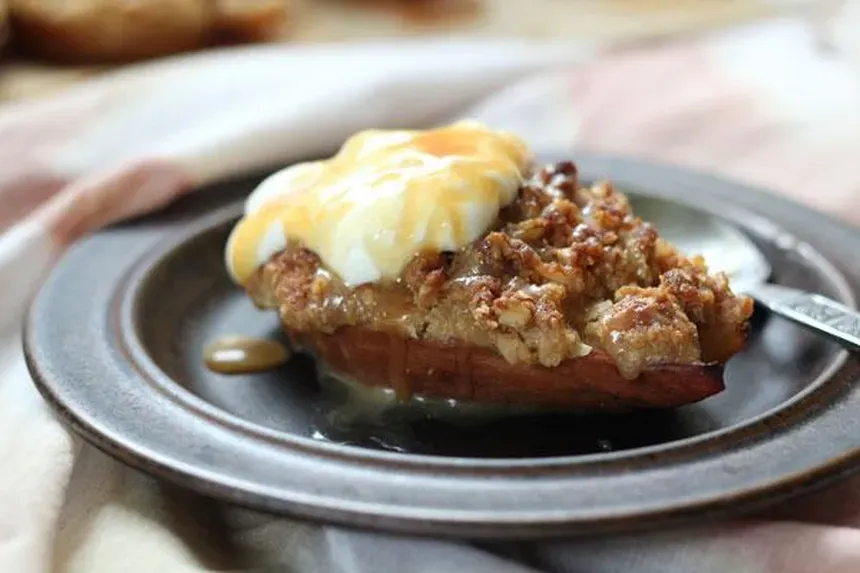
Sandy Oliver’s Dilly Beans
Season 5 Episode 5 | 3m 45sVideo has Closed Captions
Dilly beans are zesty and crispy, with an irresistible twang of salty, garlicky vinegar.
Dilly beans are zesty and crispy, with an irresistible twang of salty, garlicky vinegar. Sandy Oliver is an acclaimed food historian who has written many books about foodways and traditions of the eastern states.
Problems with Closed Captions? Closed Captioning Feedback
Problems with Closed Captions? Closed Captioning Feedback

Sandy Oliver’s Dilly Beans
Season 5 Episode 5 | 3m 45sVideo has Closed Captions
Dilly beans are zesty and crispy, with an irresistible twang of salty, garlicky vinegar. Sandy Oliver is an acclaimed food historian who has written many books about foodways and traditions of the eastern states.
Problems with Closed Captions? Closed Captioning Feedback
How to Watch Kitchen Vignettes
Kitchen Vignettes is available to stream on pbs.org and the free PBS App, available on iPhone, Apple TV, Android TV, Android smartphones, Amazon Fire TV, Amazon Fire Tablet, Roku, Samsung Smart TV, and Vizio.

Get More Kitchen Vignettes
Get more recipes on the Kitchen Vignettes blog. Available on PBS Food.Providing Support for PBS.org
Learn Moreabout PBS online sponsorship- [Sandy Oliver] Oh, okay, we're looking for page 48, okay.
(pages rustle) Okay.
Okay.
(upbeat theme music) - My name is Sandy Oliver.
Probably, my interest in farming stemmed from my interest in food.
It's hard not to be interested, in where your food comes from.
I think, there's just something about watching a plant grow from seed, to the finished product, that's just unendingly fascinating.
Every year is a little bit different.
How a plant responds to weather, and insects, and viruses and all the other things that can happen.
Watching soil develop, as you put compost and manure in it.
I feed the soil as well as I feed the plants.
(upbeat background music) It means everything to me, to be able to grow my own ingredients.
So, growing my own potatoes, my own onions, my own garlic, being able to make a meal from the food that comes from this property, is just, a marvelous experience.
How to grow a good green bean is, is the same way, how to grow anything in a garden.
Pay attention.
You're looking for disease, you're looking for insects, and then you're, you're looking for the right moment, ripeness.
You pay attention, and be rewarded.
There comes a time, you know, when there's a lot of green beans, and you eat them fresh, and you put them in salads and you do this, and you do that and the other thing with 'em, and then, you get very tired of green beans.
That's when I do the Dilly Beans.
(upbeat instrumental music) I like to use at least one head of not fully-formed, seeds yet.
Somewhere's between a blossom and a seed.
I think it intensifies the flavor.
I'll put it, right down in the jar, and then pack the beans all around that.
Pack 'em just as tightly as I can, uh, so they don't have to have as much brine, If it extends beyond the half-inch or so that you leave for headroom, just slice 'em right off the top.
Then, I make up the brine, with the water and the vinegar, and the salt.
Put a funnel in the top of the jar, pour in the brine, make sure the top of the jar is dry.
I usually process these for about 12 minutes, um.
Starting from when the, I hear the canner bubbling.
I love that rattling sound that you get, in a canner, when the jars are all jumping around a little bit, there's a there's a particular sound that I wait to hear.
When the timer goes off, I pull them out, and there is, uh, that's what you get.
(upbeat music) - [Sandy Oliver] They taste so good, in the Winter time, when they come out.
Crisp, full of dill and garlic flavor.
Just delicious.
(upbeat electronic music)
Support for PBS provided by:











